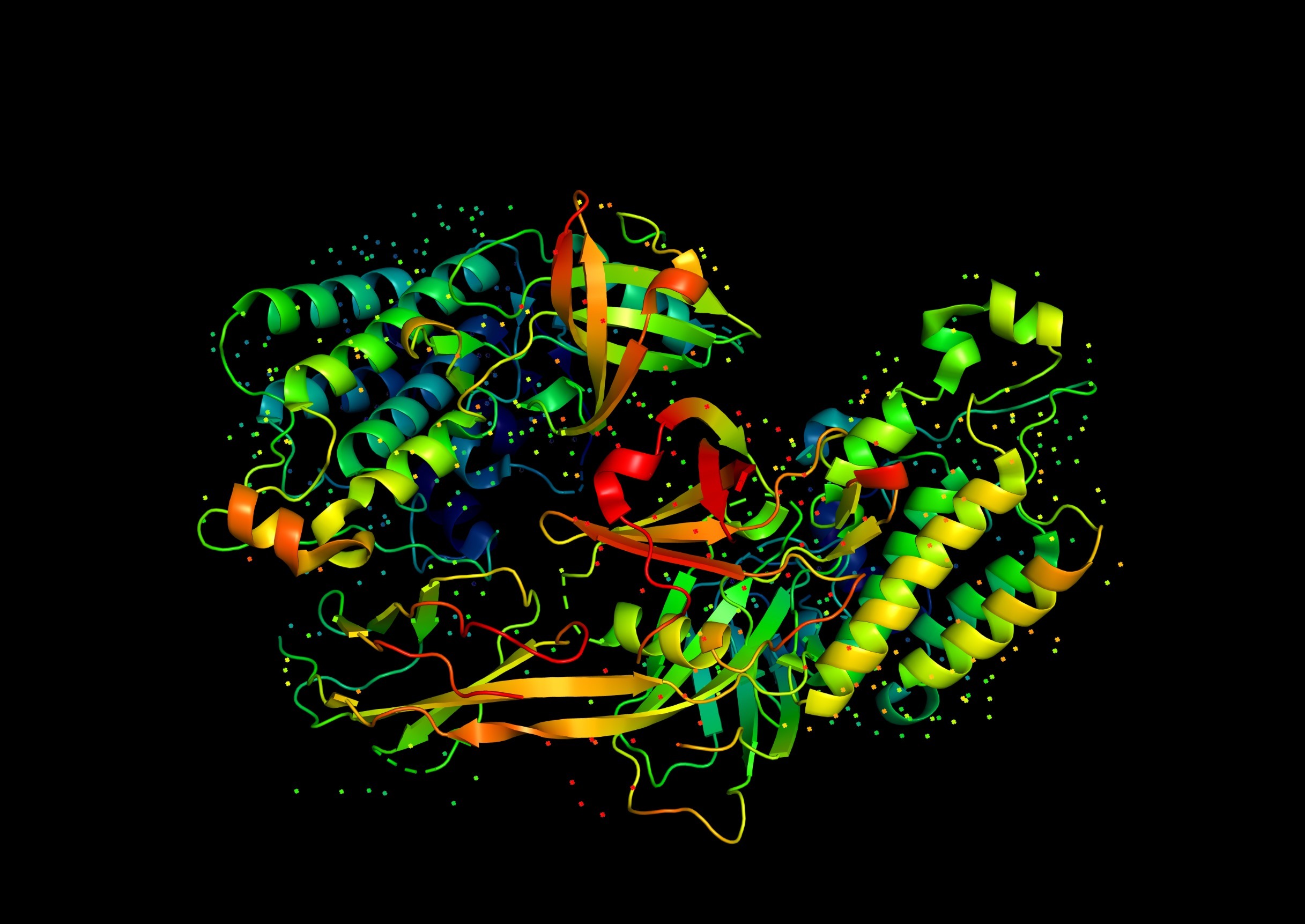Nucleoside phosphorylases (NPs) are enzymes that play a crucial role in the synthesis and in vivo salvage of nucleosides by catalyzing the reversible phosphorolysis of nucleosides. This process involves the cleavage of the glycosidic bond between the sugar and nitrogenous base, resulting in the release of a free base and a sugar-1-phosphate. The ability of nucleoside phosphorylases to both synthesize and degrade nucleosides makes them essential players in nucleotide metabolism.
The NPs divided into two families according to a structural basis. The NP-I family consists of pyrimidine nucleoside phosphorylases (PyNP, EC 2.4.2.2) and thymidine phosphorylase (TP, EC 2.4.2.4). The NP-II family includes uridine phosphorylase (UP, EC 2.4.2.3), purine nucleoside phosphorylases (PNP, EC 2.4.2.1) and S-methyl-5′-thioadenosine phosphorylase (MTAP, EC 2.4.2.28) (Yehia et al., 2018).
The MTAPs are found throughout the animal kingdom, from the archaea through to prokaryotes and eukaryotes (Del Arco et al., 2018).
Phosphorolysis of Nucleosides
Nucleoside phosphorylases primarily catalyze the phosphorolysis of nucleosides, a reaction in which a phosphate group is transferred to the sugar moiety of the nucleoside from an inorganic phosphate (Pi). This process leads to the formation of a nucleobase and a sugar-1-phosphate molecule. The nucleobase can then be salvaged and utilized for the synthesis of nucleotides.
Role in Nucleoside Salvage Pathway
Nucleoside phosphorylases are key enzymes in the salvage pathway, enabling cells to recycle nucleosides obtained from various sources. In this pathway, nucleosides derived from DNA and RNA degradation or taken up from the extracellular environment are converted back into nucleotides. The phosphorolytic activity of nucleoside phosphorylases is particularly advantageous in this context because it allows cells to use inorganic phosphate as the phosphate donor, making the salvage process energy-efficient.
Specificity and Substrate Recognition
Different nucleoside phosphorylases exhibit specificity for particular nucleosides. For example, purine nucleoside phosphorylases (PNPs) preferentially act on purine nucleosides like inosine and guanosine, while pyrimidine nucleoside phosphorylases (PNPs) act on pyrimidine nucleosides such as uridine and cytidine. The specificity of these enzymes ensures that the correct nucleobases are released during the phosphorolysis reaction.
Contribution to Nucleotide Biosynthesis
While nucleoside phosphorylases are commonly associated with the salvage pathway, some of them also play a role in de novo nucleotide biosynthesis. For instance, in purine biosynthesis, the enzyme adenosine phosphorylase can contribute to the generation of inosine monophosphate (IMP), a precursor in the synthesis of AMP and GMP.
Regulation of Nucleotide Pools
The activity of nucleoside phosphorylases is subject to regulation to ensure proper control of nucleotide pools. Feedback inhibition and allosteric regulation by end products of nucleotide metabolism help maintain balanced levels of nucleotides within the cell. This regulation is essential to prevent excessive nucleotide production and to respond to the dynamic needs of the cell during different physiological conditions.
Biomedical Applications
Nucleoside phosphorylases have been explored for various biomedical applications, including cancer therapy. Prodrug strategies involve the use of nucleoside analogs that are selectively activated by nucleoside phosphorylases in tumor cells, leading to the release of cytotoxic agents. This approach takes advantage of the elevated expression of certain nucleoside phosphorylases in cancer cells.
Structural Insights and Drug Design
Understanding the structural characteristics of nucleoside phosphorylases has contributed to the development of inhibitors and modulators with potential therapeutic applications. Targeting these enzymes can be a strategy for controlling nucleotide metabolism in diseases where dysregulation occurs, such as cancer or certain viral infections.
So then, nucleoside phosphorylases play a multifaceted role in nucleotide metabolism, contributing to both the salvage and de novo synthesis pathways. Their ability to catalyze the reversible phosphorolysis of nucleosides is essential for maintaining balanced nucleotide pools within cells, supporting crucial cellular processes such as DNA and RNA synthesis. Moreover, the specificities of these enzymes make them valuable tools for applications ranging from drug design to cancer therapy.
References
, , , , & (2018). Substrate spectra of nucleoside phosphorylases and their potential in the production of pharmaceutically active compounds. Current Pharmaceutical Design, 23, pp. 6913–6935 (Article).

Leave a Reply